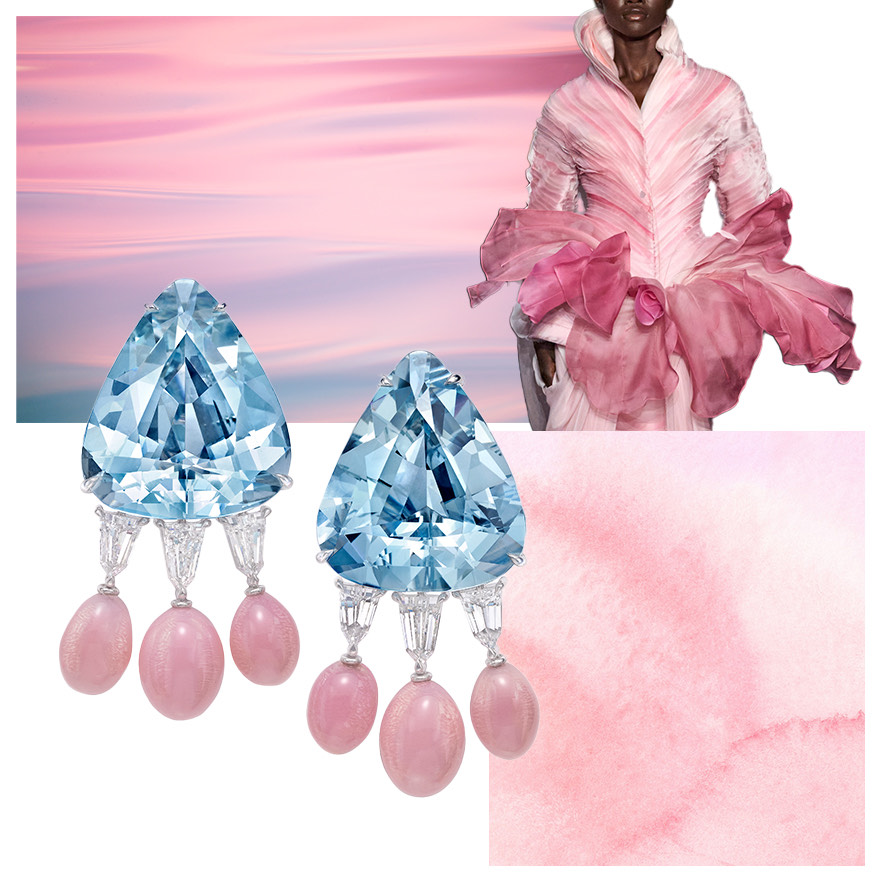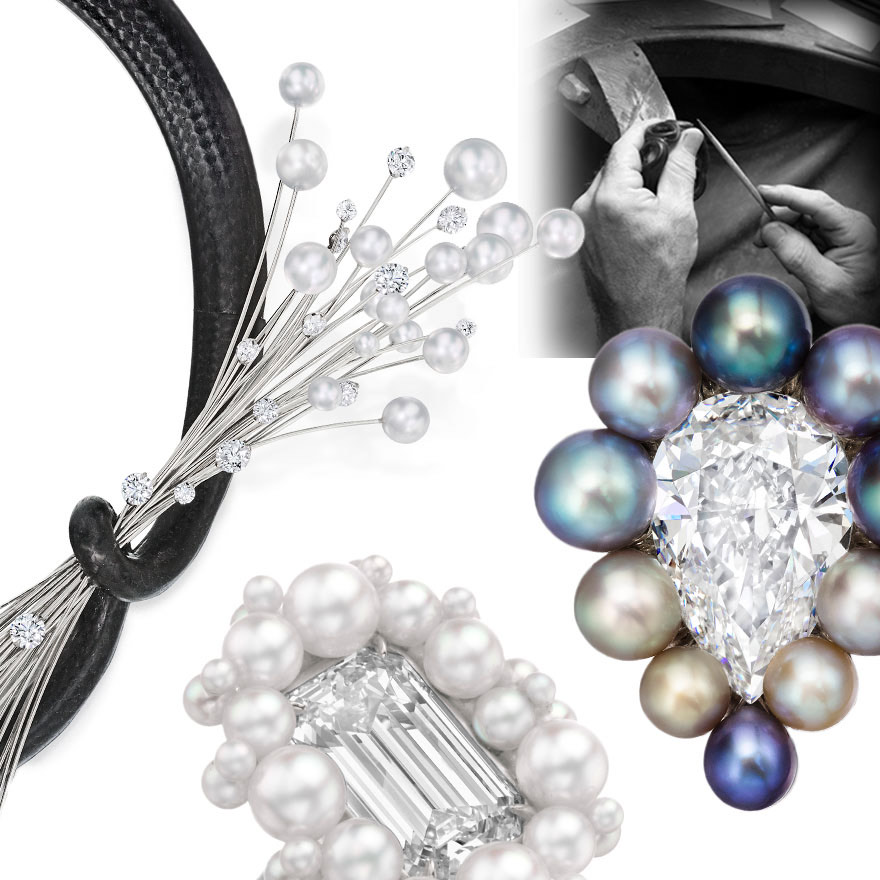
Understanding Precious Coral Jewelry
by Guest Blogger Rui Galopim de Carvalho, FGA DGA
Gemologist, World Renowned Gemology Educator and Coral Expert
Pearls and precious coral were among the very first gems ever to be cherished by mankind, dating back to the ancient civilizations. With coral, it was the natural beauty and symbolism of its red color and its branched natural shapes that placed it among the prestigious adornments of our ancestors. Today, from the more than 7,300 coral species, only 10 are considered precious coral by the fine jewelry industry, with the purest red Mediterranean Coral and the light pink Angel’s Skin Coral as probably the most popular in the world of fine jewelry.
Precious Coral vs Reef Coral
Understanding the Difference
Corals are wonderful colonial marine creatures that we all know, for example, from the colorful Great Barrier Reef, so full of life and so important to the planet’s marine ecosystem. These reef-building corals, however, are not the ones that triggered mankind’s appreciation as precious adornments since the Neolithic Era. Those are totally different corals.
Let’s try to clarify this with a little bit of biology and more specific jewelry terminology.
Corals are animals, belonging to a group called the Cnidaria phylum, where there are more than 7,300 species, including the reef-building corals that live mostly in shallow waters. According to the jewelry standards issued by CIBJO – The World Jewellery Confederation (visit www.cibjo.org to access the Coral Book from the Blue Book series), the so-called precious corals that are used in fine jewelry are restricted to a very small group, known in biology as the Corallidae family. In this group there are about ten species of coral used in jewelry, and these do not live in the same ecosystem, nor at similar ocean depths, as their relatives in the reefs. The reef-building corals from shallow waters, that are currently suffering the effects of climate change and ocean acidification, are in fact not used at all in fine jewelry. Although they share the same collective name “coral,” reef corals are not the same as precious corals.
Nomenclature
Clarifying the Various Names of Coral

Assael Beyond Rare Japanese Aka Coral
Here is where and how the nomenclature approved by CIBJO adds value and clarity – the species that are used as precious corals are really a fraction of the whole coral world, being very specific and highly differentiated gem materials.
The few species of precious corals that are seen in fine jewelry today, depending on the species they come from, have a lustrous porcelaneous polish. They vary in color from the traditional deep red to the pure uniform white, with some intermediate pink or salmon and also with variegated or spotted textures. Specialists typically refer to precious corals by their biological name: the species binomial designation in Latin italics. This is the most universal way to communicate species (e.g. Corallium rubrum). The jewelry trade, however, tends to use plain language and many local vernaculars to describe coral products (e.g. Sardinian Coral, Mediterranean Coral, etc.). A better understanding of coral biological names can be helpful if we wish to understand their variations, as well as the relevant conservation and resource management issues. Please see the chart at bottom with popular precious coral commercial names and their typical corresponding species. In the chart you will note, again, that there are only about ten species of coral being used in precious jewelry.
Angel Skin Coral
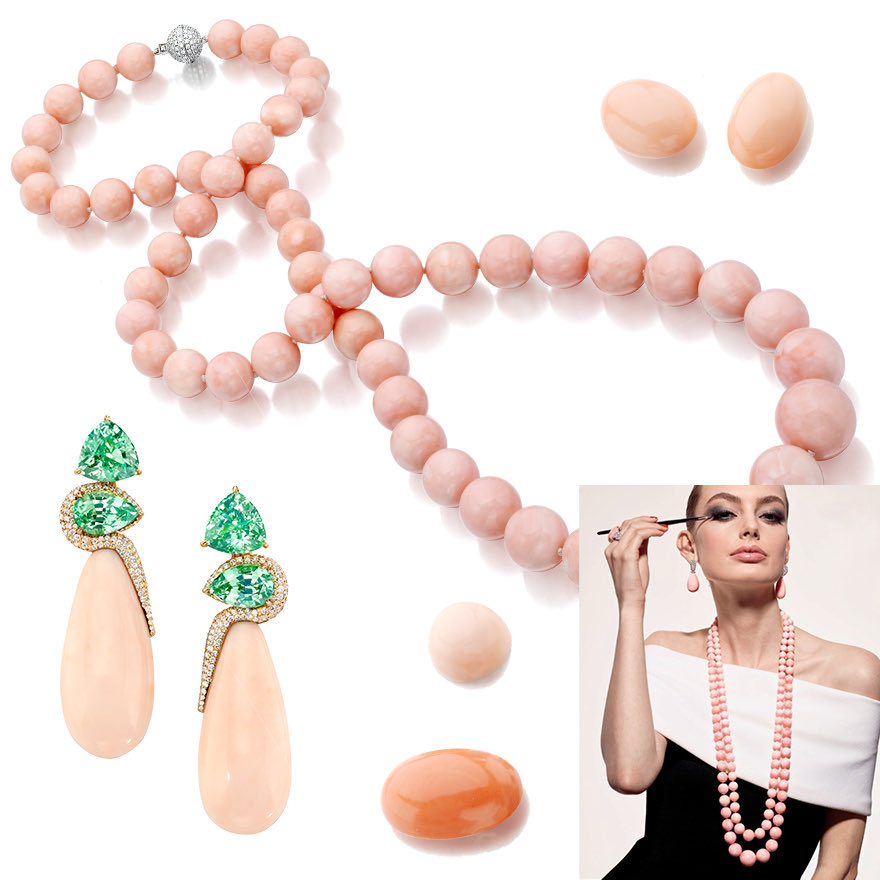
Clockwise from Upper Left – Assael Beyond Rare Gem Angel Skin Coral 32” Necklace, matching shades of Gem Angel Skin Coral, Model wearing two long strands of Assael Angel Skin Coral from the Neiman Marcus Holiday Book, various shades of Angel Skin Coral, Assael Angel Skin Coral Earrings with Green Garnets and Diamonds
From these precious coral species, the light pink to salmon or red-colored Pleurocorallium elatius and the snow-white Pleurocorallium konojoi, have been quite popular in high-end jewelry roughly since the late 19th century. They represent an almost continuous color gradation from pure white to red. One of the most interesting varieties of this species group is the rare and valuable “Angel Skin” coral. Angel Skin, or “pelle d’angelo” in Italian, is the romantic name for the lovely homogeneous light pink variety of P. elatius, otherwise known in Japan as magai or boké, that happens to be an anomalous coral color due to an albino-like disorder. Albino are extremely rare in other precious corals and a little less rare in this species, allowing the collection of beads and cabochons to manufacture signature jewelry pieces. Actually, to be totally accurate, Angel’s Skin is an expression used by coral traders for all very light pink albino precious corals, but mostly the P. elatius.
To better appreciate the rarity of this anomalous precious coral, when gathering a strand, the higher the quality and size of the beads, the longer it takes to complete it, sometimes even decades. So, it is often considered a never-ending collection. This is how rare fine Angel Skin coral from P. elatius really is, and this is behind the sometimes very high prices that may be asked for a fine strand.
Sardinian Coral
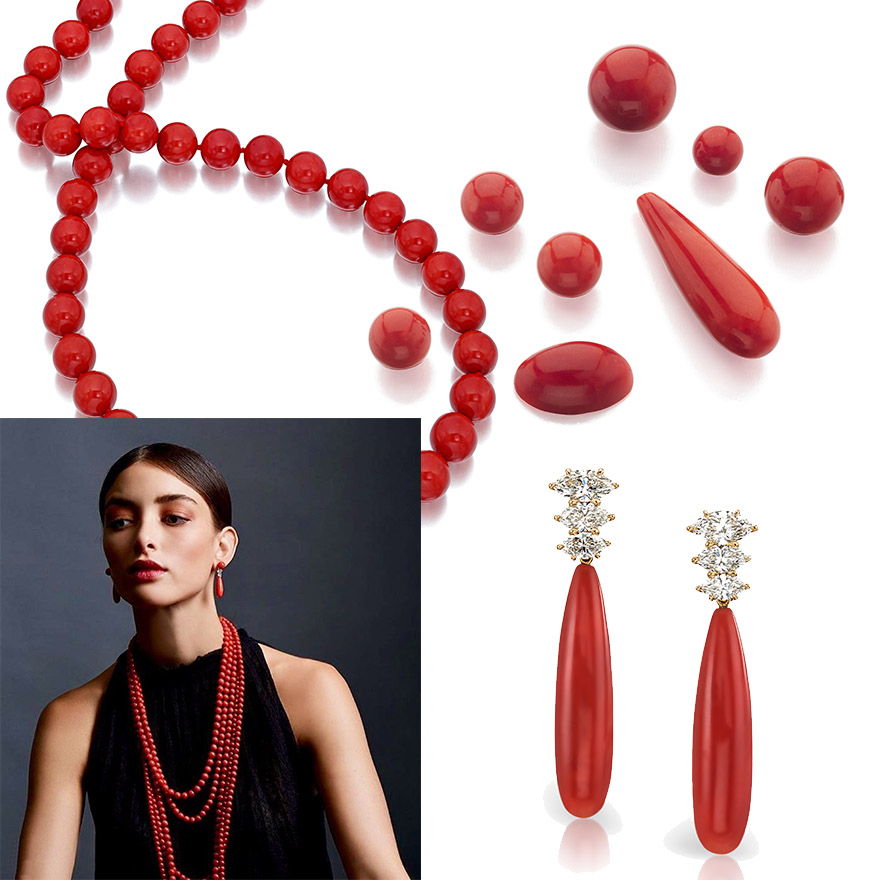
Clockwise from Upper Left – Assael Natural Sardinian Coral 33” Necklace, various shapes of Sardinian Coral, Assael Pagoda Earrings with Natural Sardinian Coral and Marquise Diamonds, Model wearing Assael Natural Sardinian Coral Multi-Strand Necklace and Assael Heart’s Desire Earrings
The epitome of coral as a fine jewelry gem material is the traditional species from the Mediterranean and the adjacent Atlantic Ocean, the red Corallium rubrum, known as Sardinian coral or Mediterranean coral. The red color of this small branched coral species, when compared with the larger Asian species, has been greatly appreciated throughout history for its very strong symbolism. It may be seen featured in old scriptures like the Bible, the Koran and also in Judaica, Buddhist and Hindu traditions. Sardinian coral may be seen set in artifacts of historical heritage, not only in the coastal areas of that marine reservoir, but also as far away as equatorial Africa, the Middle East and Far East Asia, all of which are relevant testimonies of very old trade routes. Today, fishing for these corals follows very strict regulations from the General Fisheries Commission for the Mediterranean of FAO (Food and Agriculture Organization of the United Nations), with restrictions for species protection. The harvesting of this coral below 50 meters is limited to minimum trunk sizes and only to very experienced divers. There is also regular delimitation of protected areas for species protection and longevity.
CIBJO has a special Coral Commission on which Christina Lang Assael, the President and CEO of Assael serves. The Coral Commission, active since 2014, has been keen to research and communicate these conservation and sustainability concerns to the jewelry industry with a special emphasis on climate action, encouraging all coral dealers and manufacturers to measure their carbon footprint and become aware of the challenges that all biogenic gem materials like coral, and humanity for that matter, are facing today. Following good business practices and responsible sourcing is, therefore, critical when dealing with this beautiful and historically relevant gem material that we know and love as precious coral.
Responsible Sourcing
Understanding the Regulations
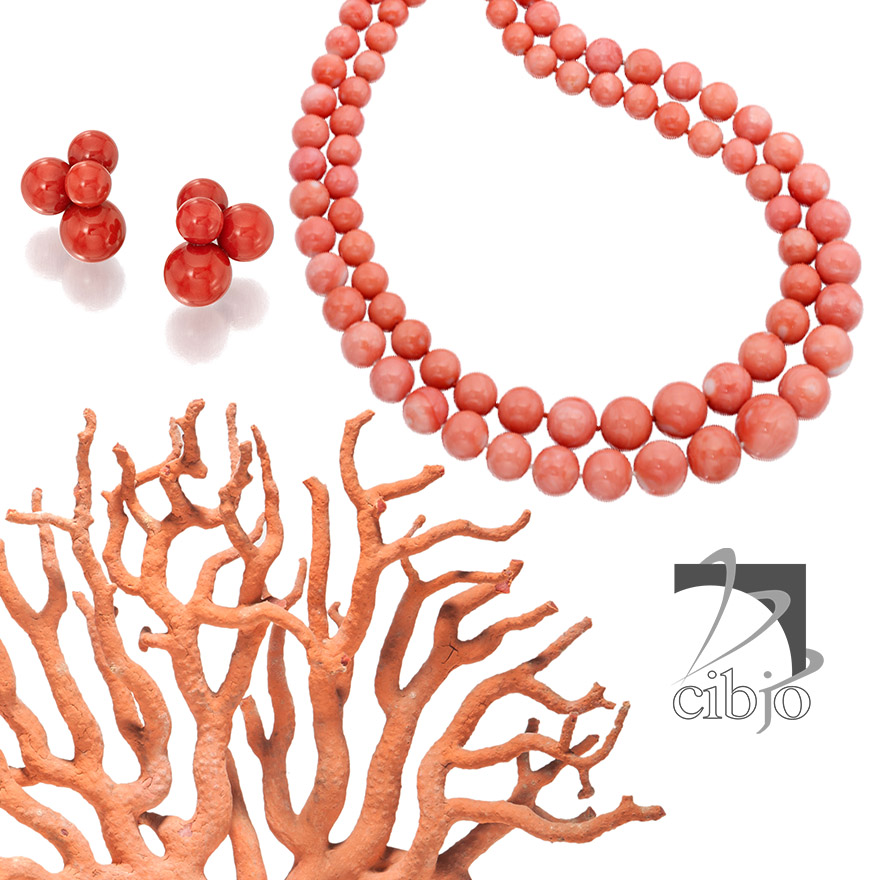
Clockwise from Upper Left – Natural Sardinian Coral Bubble Earrings by Sean Gilson for Assael, Two Gem Angel Skin Coral Necklaces from Assael, CIBJO – World Jewellery Federation, Natural Angel Skin Coral Tree
The Coral Commission of CIBJO helps the jewelry industry to better understand the different types of coral and the helpful legal regulations that protect them. We know that a few precious coral species have been listed for a while in the Appendix III of CITES, the Convention in International Trade of Endangered Species of Fauna and Flora, otherwise known as the Washington Convention. Although being on a species protection list may sound like a prohibition to the trade, actually the Appendix III where these coral species are listed means something else. This Appendix III gathers the species that are not endangered but that require monitoring, namely, to document all the international trade (e.g. import, export) so there is official data, contributing to better resource management policies in the countries of origin. Following the same spirit, CIBJO published recently a Coral Guide for Customs, translated into several languages, to assist the proper authorities in that monitoring procedure. By knowing CITES and how it works, it becomes clear that a gem material from a species that is listed on Appendix III, if accompanied by the proper documentation during an international transaction, is a perfectly safe and legal product to trade, being compliant with that jurisdictions’ regulations and trade standards. In order to appreciate the difference in CITES listings, in Appendix I, for example, where no precious coral is listed, the trade is prohibited (e.g. tortoiseshell, hornbill ivory) and Appendix II, also with no precious coral listed, is meant for species that are not necessarily threatened now, but that may become so unless trade is controlled (e.g. narwal ivory, queen conch).
CITES Appendix III listed precious coral species include the deep red oxblood coral Corallium japonicum that occurs in Japan and is very popular in China, the light pink, salmon to red colored coral P. elatius that occurs in Japan and Taiwan, and the pure white coral P. konojoi from Vietnam (you may refer to a full listing of the precious coral species and CITES in the abovementioned CIBJO Coral Book).
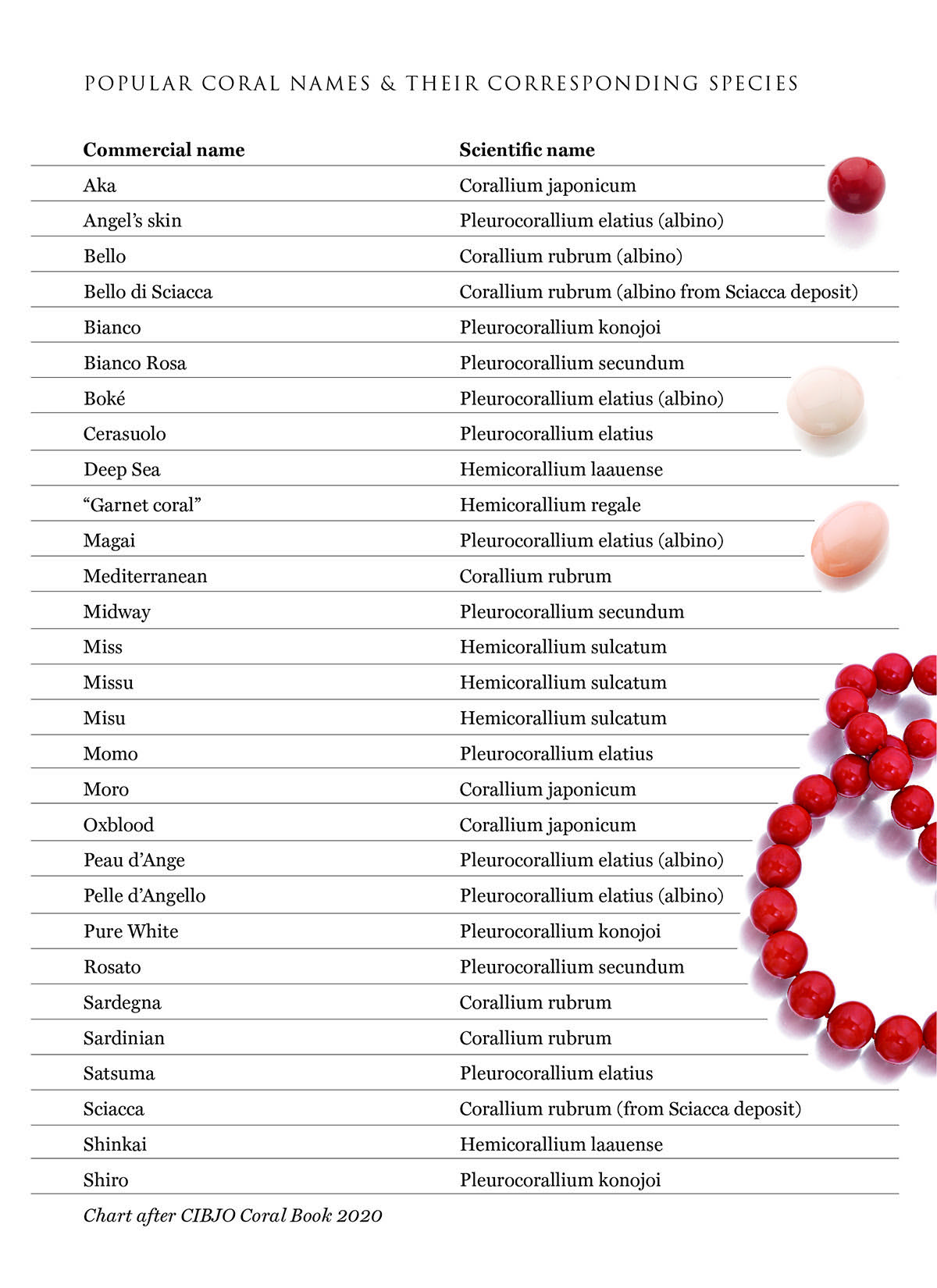

Rui Galopim de Carvalho FGA DGA is a Gem Education Consultant with a vast experience in course development and content creation and also an in-class and remote tutor for groups or in one-on-one sessions. As an international lecturer, Rui has traveled the world and surfed the digital ecosystem giving talks in various aspects of gemology, gem history and jewelry. During the COVID-19 lockdown his Home Gemology webinars were popular entertainment and educational free events, having had the support of CIBJO – The World Jewelry Confederation. He is also an author on various aspects of gemology, especially precious corals and the history of the use of gems in history. Rui is also a consultant for the Museu Nacional de Arte Antiga and curator of the forthcoming exhibition of the Crown Jewels of Portugal.
Learn more about Rui and follow his blog at https://www.ruigalopim.com
Feature Image at Top – Kaleidoscope of various Assael jewelry designs in all Natural Sardinian Coral and Beyond Rare Angel Skin Coral.
Posted on Oct 18, 2020 in History, Pearl Education by Duvall O'Steen
Articles you may also enjoy
Join our Mailing List
Join us for magnificent pearl trends and exclusive treasures. Discover a world that is truly ... beyond rare.

Feeling inspired?
Consider this your invitation to the House of Assael. Find your closest luxury jeweler using our map search and start your journey to timeless elegance.


